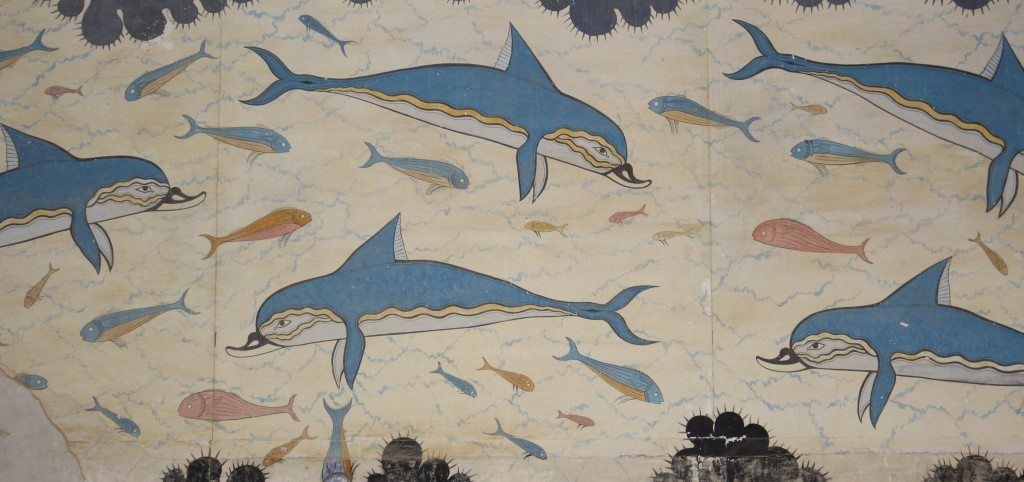As a technique, true fresco painting (buon fresco) is the painting of colour pigments on wet lime plaster without a binding agent, and when the paint is absorbed by the plaster, it is fixed and protected from fading. Inherent problems with frescoes for historians are their fragility, incompleteness, and artistic anonymity. In addition, at archaeological sites they are often found removed from their original settings, making them extremely difficult to date. However, frescoes can provide us with some of the most striking imagery from antiquity, and they can give a unique insight into the ordinary lives of people long ago.
For more on frescoes see our articles on Minoan Frescoes, Akrotiri Frescoes, and Roman Wall Painting.
Minoan Frescoes
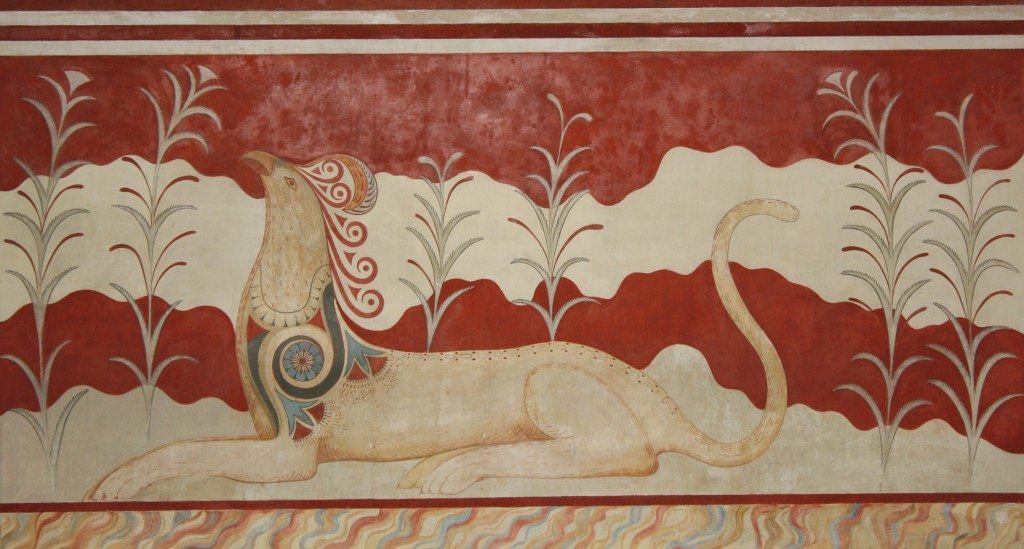
Minoan Griffin Fresco from Knossos, 1700-1450 BCE.

Minoan Bull-leaping Fresco from Knossos, Crete. Final Palatial period 1450-1400 BCE. Heraklion Archaeological Museum, Crete.
Akrotiri Frescoes
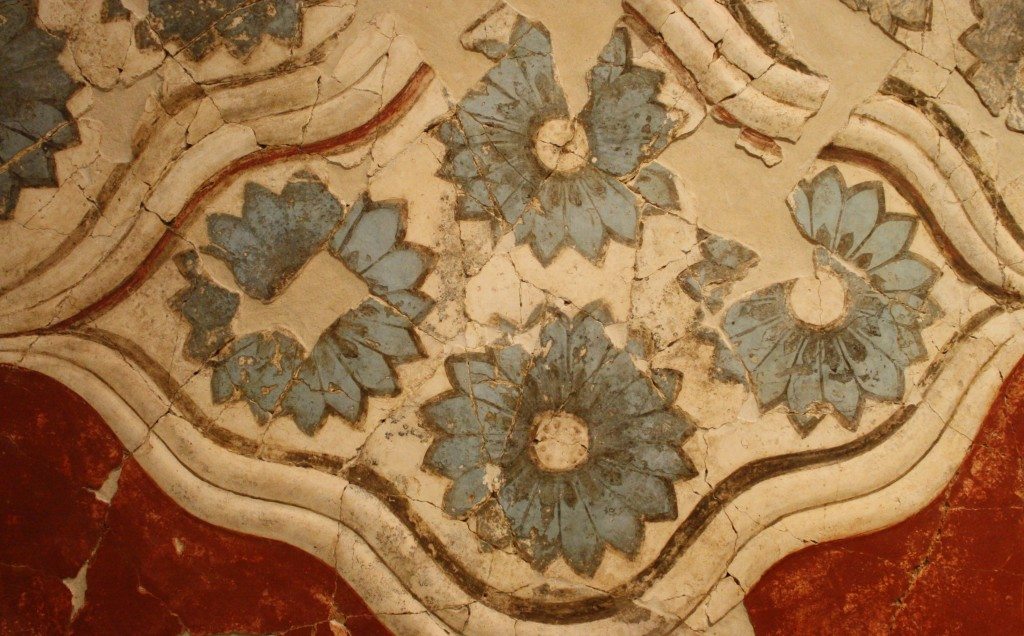
A section of a wall painting with relief ornament and painted rosettes from Akrotiri on Thera (Santorini), 17th century BCE. Museum of Prehistoric Thera, Santorini.
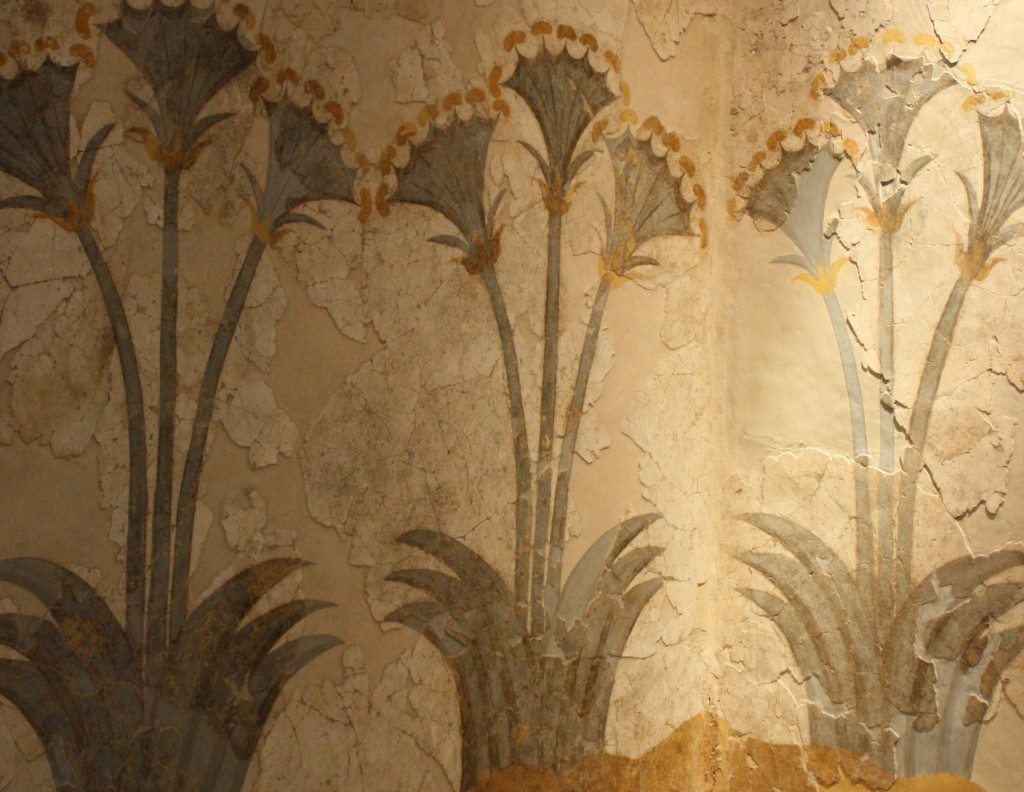
The Papyrus Fresco from the Room of the Ladies from the house of the same name, Akrotiri, Thera. Papyrus is not indigineous to Thera and therefore suggests that the Cycladic artists were borrowing iconography from elsewhere, perhaps Egypt or Minoan Crete. 17th century BCE. Museum of Prehistoric Thera, Santorini.
Roman Frescoes
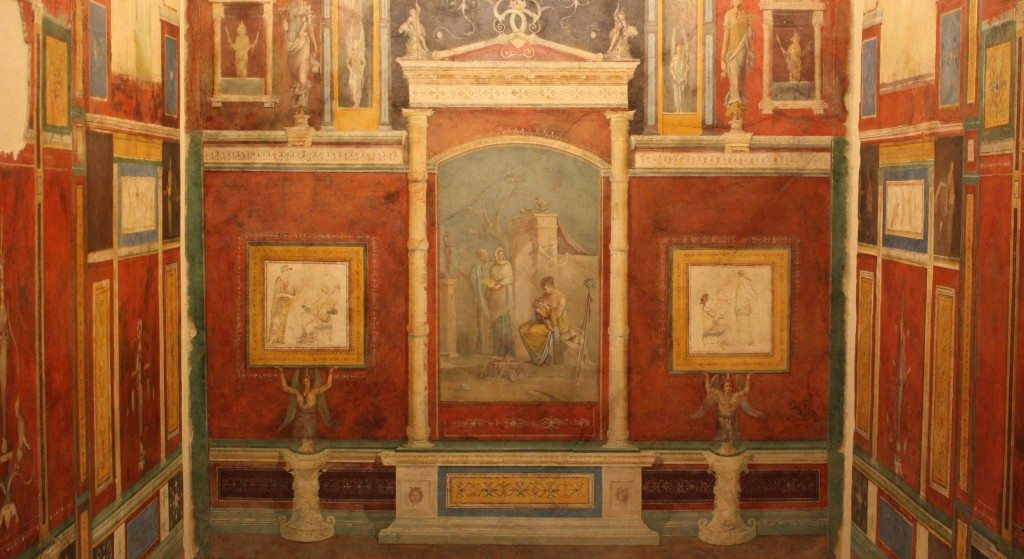
A room from the Villa of the Farnesina, Rome, early 1st century BCE. Probably used as a bedroom. The fresco surrounds the whole room and uses trompe-l’oeil effects to create perspective. The central panel shows Dionysos nursed by nymphs, the left panel shows a seated Aphrodite with Eros. Palazzo Massimo, Rome.
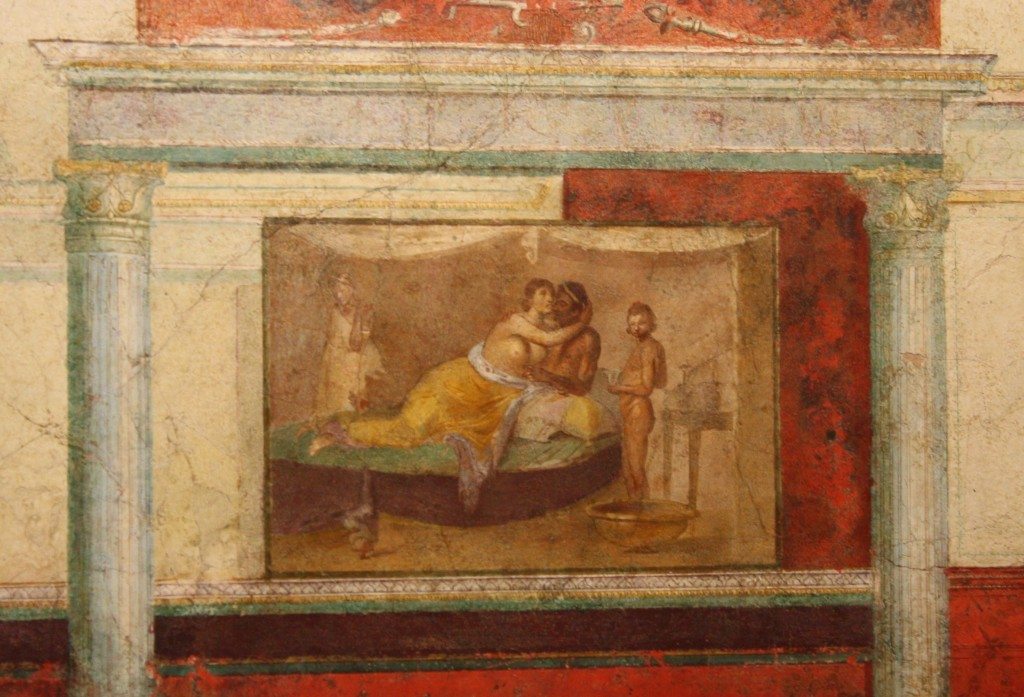
A detail of the 1st century BCE fresco, which entirely decorated a cubiculum (probably a bedroom) of the Villa of the Farnesina in Rome. The room has a distinct Egyptian flavour mixed with scenes from Greek mythology. Palazzo Massimo, Rome.
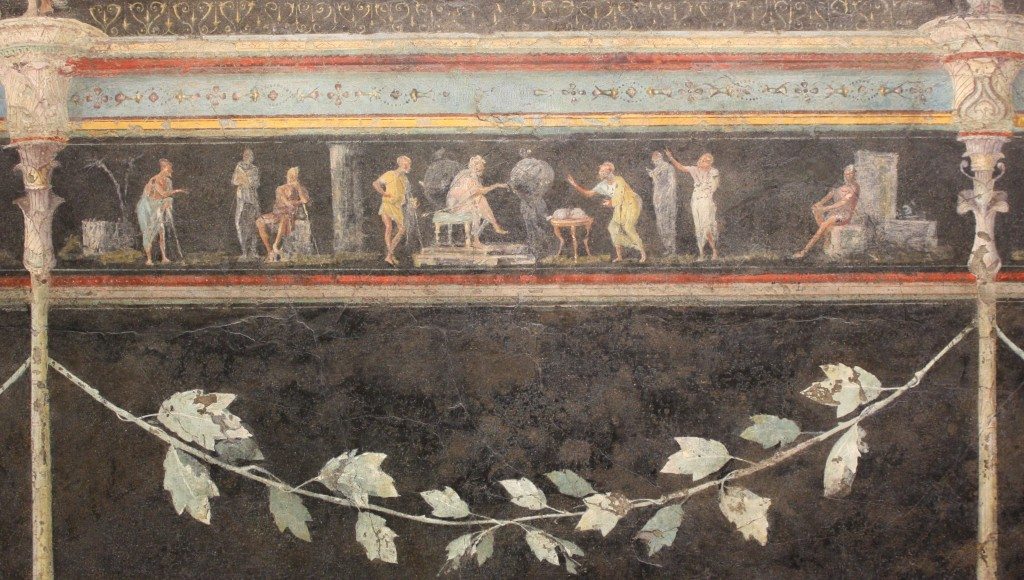
A detail of the 1st century BCE fresco which decorated the dining room (triclinium) of the Villa of the Farnesina in Rome. The long frieze depicts judicial scenes, perhaps famous cases and the events which led to the trial. Palazzo Massimo, Rome.
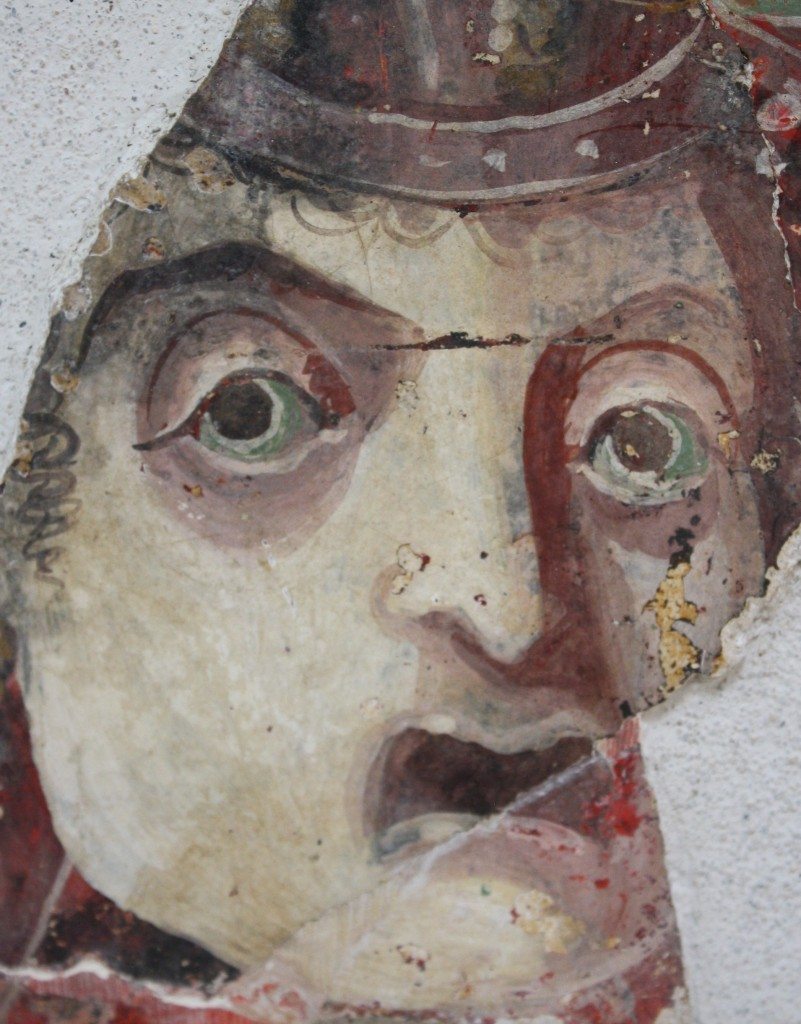
A Roman fresco fragment depicting a face, from Solunto, Sicily. Date unknown, Archaeological Museum, Solunto, Sicily.
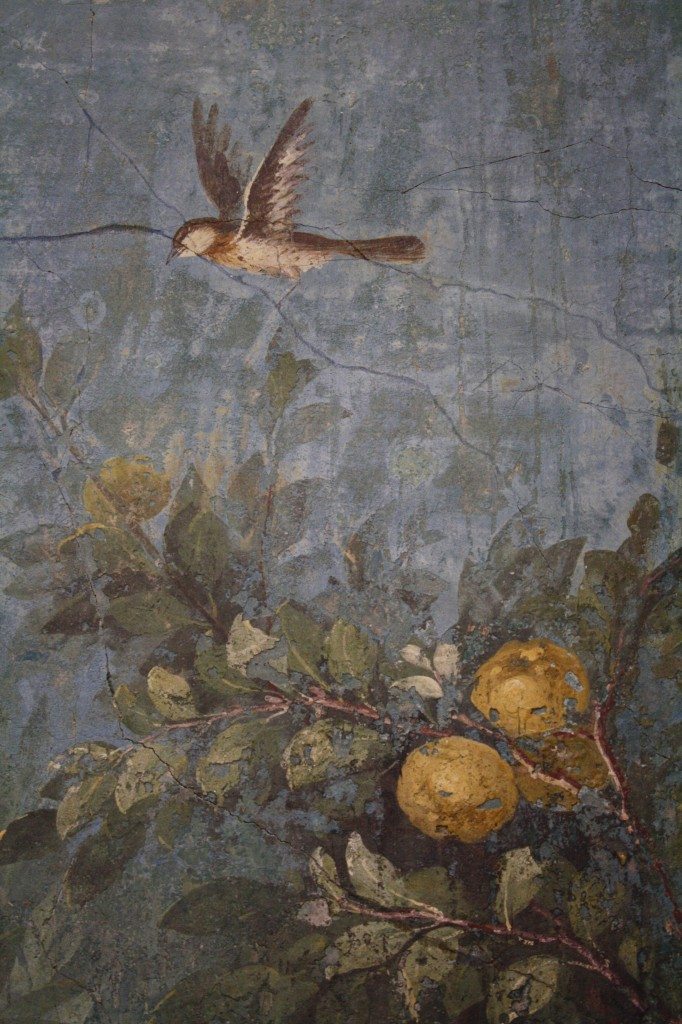
A detail of the garden fresco from the winter triclinium (dining room) from the Villa of Livia, wife of Augustus, Rome. The life-size representations of trees, flowers, fruit, and birds decorate all four walls of the room to create a continuous and 360° view of a garden, which adds perspective by increasing clarity in the foreground subjects. Palazzo Massimo, Rome.
All images were taken by the author and can be seen on the Ancient History Encyclopedia website.
